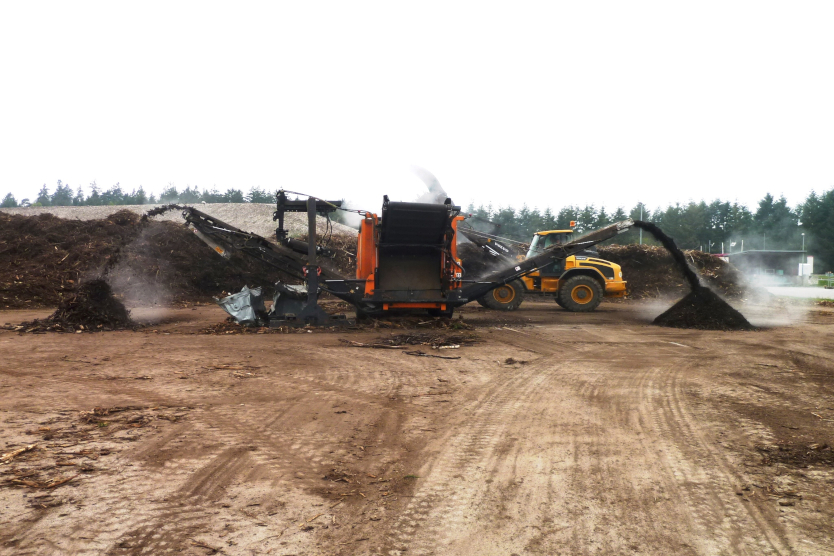
Straining of chopped biomass: Wooden biomass has big energetic potential that remains mostly unused.
© Witzenhausen-Institut GmbH
The aim of the project team of the Witzenhausen Institute was to find the best solution for the collection, preparation, and material and energy recycling of green waste. Initially the potential was determined and the existing structures were evaluated – to this end the researchers consulted 175 treatment plants in Germany with regard to their data recording systems and their treatment plants.
The outcome was that 75% of those questioned separate the woody materials from the composting systems to use for fuel, yet only 18% of the separated biomass is used energetically. Researchers believe it is possible to increase this share to 30%, which is the equivalent of 1-2 million tons of fuel gained from 5 million tons of green waste. Also, according to the researchers, in most cases, DIN standards for woodchips are met. The green and leafy components of biomass could be processed to compost.
The researchers used field trials on three treatment plants for green waste to draw up measures for optimising the fuel quality. They are also seeking to demonstrate how an optimised value-added chain can lead to a reduction in 3.3 million tons of carbon dioxide. In order to be able to make better use of the potential of the material in energy and compost in future, researchers recommend that it is recorded separately. Thus, instead of a federal average of 60 kg of green waste per inhabitant being collected, up to 178 kg per inhabitant could be collected and used, too. The key to success is to succeed in optimising the collection of waste data - the best results could be achieved by collecting the green waste free of charge.
The project was by the Federal Ministry for Economic Affairs and Energy (BMWi) within the funding programme "Biomass energy use" between June 2016 and May 2018.


